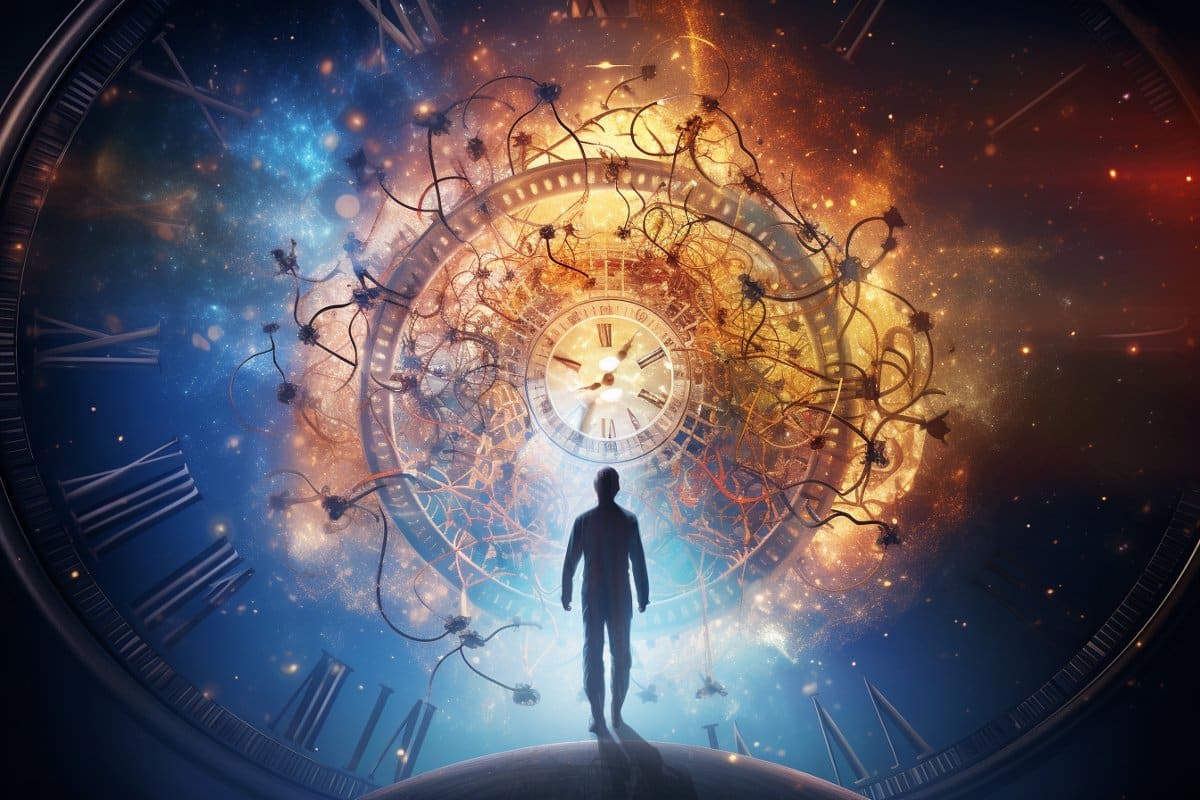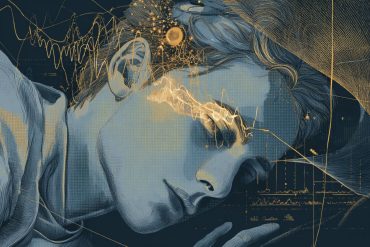Summary: Researchers unveil how neurons in the brain depict time and space, fundamental to human consciousness.
Utilizing special depth electrodes, they studied patients undergoing treatment for epilepsy, revealing “place cells” for spatial awareness and “time cells” for temporal comprehension.
One study showed these cells operate independently yet concurrently during navigation tasks. Another found certain neurons maintained regular temporal patterns regardless of external stimuli speed.
Key Facts:
- The brain contains “place cells” and “grid cells” for spatial mapping and “time cells” for temporal tracking.
- While navigating a virtual environment, place cells remain consistent, but time cells change based on the task, suggesting time and space are separable neuron dimensions.
- Temporally periodic cells (TPCs) exhibit unique periodic behavior across time scales, potentially providing metrics for both time and space in the brain.
Source: UCLA
Two studies led by UCLA researchers offer new insights into the way neurons in the human brain represent time and space—the most basic ingredients of consciousness of human existence and the primary dimensions of experience that allow us to reconstruct the past and envision the future.
The new findings are based on recordings of the activity of single neurons in the brain, from studies led by Dr. Itzhak Fried, a neurosurgeon and researcher at the UCLA David Geffen School of Medicine, the senior author of two articles in Cell Reports.
Patients who had undergone surgical placement of special depth electrodes developed and implanted by Fried for surgical treatment of intractable epilepsy agreed to perform cognitive tasks while their brain cell activity is recorded for these studies.
Neurons that act as the brain’s GPS system—termed “place cells” and “grid cells”—were discovered initially in rodents, similar findings later described in humans by Fried and colleagues at UCLA in collaboration with Dr. Michael Kahana, professor of Psychology at the University of Pennsylvania and a co-senior author of one of the new studies. The brain’s clock cells, or “time cells,” were identified in more recent years.
In one of the new studies, researchers sought to determine how the brain keeps track of both space and time simultaneously.
“To provide an answer, our patients played a timed navigation game where they alternated between searching for and retrieving gold in a virtual gold mine,” Fried said.
The researchers, including first author Dr. Daniel Schonhaut and co-author Dr. Zahra Aghajan, first identified “time cells” that activated during waiting periods between the patients’ searching periods and retrieval periods.
These “at-rest” time cells would activate one after another, as if each was responsible for counting a different second, throughout the waiting period.
During game navigation, separate “place cells” appeared as participants navigated to specific locations in the virtual mine, with a new set of “time cells” appearing at particular points during navigation.
“When patients alternated from searching for gold—a learning phase—and digging for gold—retrieval—place cells remained unchanged, firing at the same locations, while time cells changed. Thus, while temporal and spatial contexts are jointly represented in the brain, they are dissociable, or separable, dimensions at the neuron level,” Kahana said.
“This is the first study to demonstrate the coexistence of time and place cells in the human brain,” Fried added.
“Together, these neuronal classes constitute a biological basis for the cognitive map of spatiotemporal context that we propose comprises the scaffolding onto which memories are written.”
In the second study, researchers wanted to understand how the brain keeps track of time during an extended period—a single, continuous episode—like when people are watching a movie with no interruptions.
They wondered if neurons would activate periodically—at recurring time intervals—similar to the way certain spatial neurons fire at spatial intervals when a rodent or human moves through an environment.
In spatial situations, a specific set of space-related cells in the brain’s entorhinal cortex forms a grid-like map of the environment, where different scales expressed in modulated firing rates provide a metric, or measure, of space at different distances.
To determine if the “periodicity” present in spatial scales can also be seen in the time-axis, the researchers showed 14 neurosurgical patients an hourlong movie while recording single-neuron activity from multiple brain regions.
Examination of the firing rates revealed that some units exhibited striking periodicity in their firing over the course of the movie, and the time scale of this periodicity varied from unit to unit, ranging from tens of seconds to several minutes.
Fried said the researchers were surprised to find this unique set of neurons, mostly in the entorhinal cortex, that modulated their activity in such a strikingly periodic manner across time scales that extended to minutes.
“Time within the video could be decoded from the activity of this population of neurons,” said Zahra Aghajan, first author of the study also co-authored by Dr. Gabriel Kreiman Professor at Harvard Medical School.
“The ability to extract precise, localized, temporal information from this population of cells shows that their periodic activity constitutes a viable mechanism to encode time.”
When the participants took a memory test after viewing the movie, many of the time cells changed their dominant timing to shorter time scales, suggesting that these cells may play a role in temporal compression of experience required for memory retrieval. Yet, the relation of these cells to memory performance will need to be explored with further research.
The researchers observed that when the video was presented at two different speeds—regular and sped up—a significant percentage of these temporally periodic cells, or TPCs, maintained their dominant time scales, suggesting a degree of regularity regardless of the audiovisual content.
“Our results suggest that TPCs’ temporal periodicity may complement the spatial periodicity of grid cells, together providing scalable metrics for both space and time and enabling the encoding and retrieval of human experience,” Fried said.
About this neuroscience research news
Author: Itzhak Fried
Source: UCLA
Contact: Itzhak Fried – UCLA
Image: The image is credited to Neuroscience News
Original Research: Open access.
“A neural code for time and space in the human brain” by Itzhak Fried et al. Cell Reports
Open access.
“Minute-scale periodicity of neuronal firing in the human entorhinal cortex” by Itzhak Fried et al. Cell Reports
Abstract
A neural code for time and space in the human brain
Highlights
- Human medial temporal lobe and prefrontal cortex neurons encode time during task-free delays
- Time and place are independently represented during timed navigation
- Time cells remap between contextually similar events with stable place cell firing
- Population neural activity represents time across multiple events in a sequence
Summary
Time and space are primary dimensions of human experience. Separate lines of investigation have identified neural correlates of time and space, yet little is known about how these representations converge during self-guided experience.
Here, 10 subjects with intracranially implanted microelectrodes play a timed, virtual navigation game featuring object search and retrieval tasks separated by fixed delays.
Time cells and place cells activate in parallel during timed navigation intervals, whereas a separate time cell sequence spans inter-task delays.
The prevalence, firing rates, and behavioral coding strengths of time cells and place cells are indistinguishable—yet time cells selectively remap between search and retrieval tasks, while place cell responses remain stable. Thus, the brain can represent time and space as overlapping but dissociable dimensions.
Time cells and place cells may constitute a biological basis for the cognitive map of spatiotemporal context onto which memories are written.
Abstract
Minute-scale periodicity of neuronal firing in the human entorhinal cortex
Highlights
- When watching a movie, the activity of human neurons exhibits minute-scale periodicity in time
- Different neurons maintain or remap their periodicity when playback speed is altered
- During recognition memory, most neurons remap their periodicity to shorter time scales
Summary
Grid cells in the entorhinal cortex demonstrate spatially periodic firing, thought to provide a spatial map on behaviorally relevant length scales. Whether such periodicity exists for behaviorally relevant time scales in the human brain remains unclear.
We investigate neuronal firing during a temporally continuous experience by presenting 14 neurosurgical patients with a video while recording neuronal activity from multiple brain regions.
We report on neurons that modulate their activity in a periodic manner across different time scales—from seconds to many minutes, most prevalently in the entorhinal cortex. These neurons remap their dominant periodicity to shorter time scales during a subsequent recognition memory task.
When the video is presented at two different speeds, a significant percentage of these temporally periodic cells (TPCs) maintain their time scales, suggesting a degree of invariance.
The TPCs’ temporal periodicity might complement the spatial periodicity of grid cells and together provide scalable spatiotemporal metrics for human experience.








